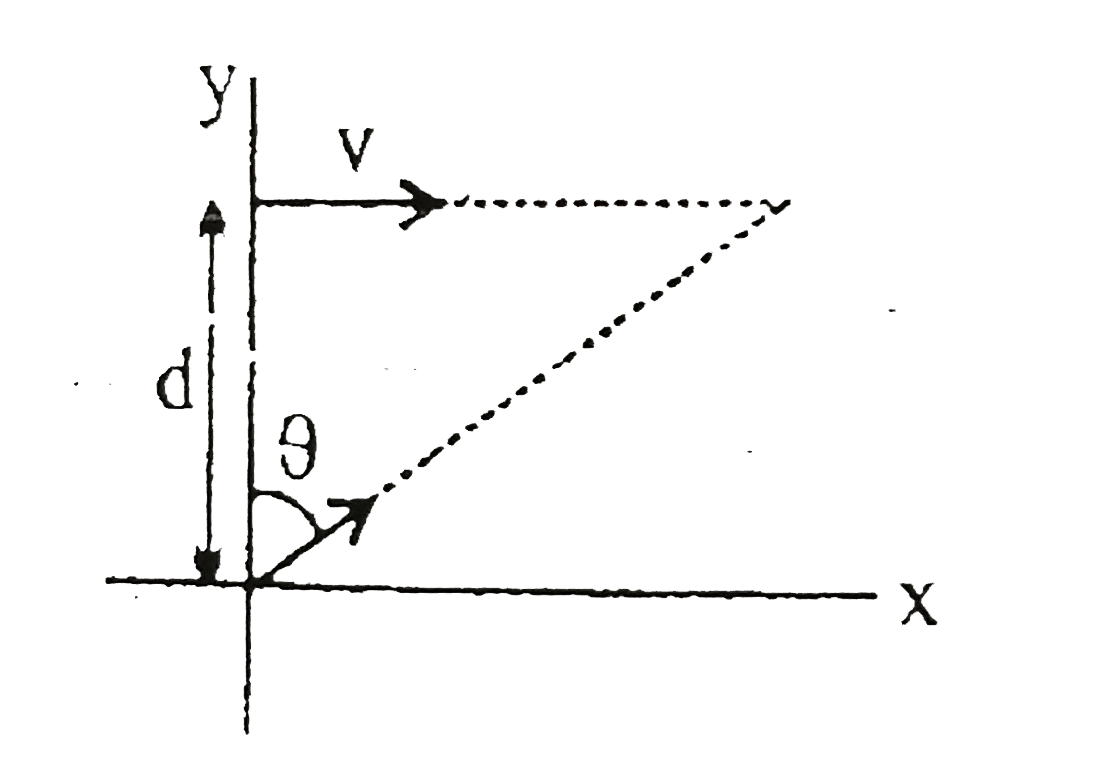A body starts from rest from the origin with an acceleration of 6m/s2 along x axis and 8m/s2 along y axis.The distance from origin after 4 seconds will be
56m
64m
80m
128m
The correct Answer is:C
To solve the problem step by step, we will calculate the distance traveled by the body along the x-axis and y-axis separately, and then use the Pythagorean theorem to find the total distance from the origin.
Step 1: Calculate the distance traveled along the x-axis
The formula for distance traveled under constant acceleration is given by:
sx=ut+12axt2
Where:
- sx = distance traveled along the x-axis
- u = initial velocity (which is 0 since the body starts from rest)
- ax = acceleration along the x-axis (6 m/s²)
- t = time (4 seconds)
Substituting the values:
sx=0⋅4+12⋅6⋅(42)
sx=0+12⋅6⋅16
sx=3⋅16=48 meters
Step 2: Calculate the distance traveled along the y-axis
Using the same formula for the y-axis:
sy=ut+12ayt2
Where:
- sy = distance traveled along the y-axis
- ay = acceleration along the y-axis (8 m/s²)
Substituting the values:
sy=0⋅4+12⋅8⋅(42)
sy=0+12⋅8⋅16
sy=4⋅16=64 meters
Step 3: Calculate the total distance from the origin
To find the total distance from the origin, we can use the Pythagorean theorem:
d=√s2x+s2y
Substituting the values we found:
d=√(48)2+(64)2
d=√2304+4096
d=√6400
d=80 meters
Final Answer
The distance from the origin after 4 seconds is 80 meters.
---
The formula for distance traveled under constant acceleration is given by:
sx=ut+12axt2
Where:
- sx = distance traveled along the x-axis
- u = initial velocity (which is 0 since the body starts from rest)
- ax = acceleration along the x-axis (6 m/s²)
- t = time (4 seconds)
sx=0⋅4+12⋅6⋅(42)
sx=0+12⋅6⋅16
sx=3⋅16=48 meters
Using the same formula for the y-axis:
sy=ut+12ayt2
Where:
- sy = distance traveled along the y-axis
- ay = acceleration along the y-axis (8 m/s²)
sy=0⋅4+12⋅8⋅(42)
sy=0+12⋅8⋅16
sy=4⋅16=64 meters
To find the total distance from the origin, we can use the Pythagorean theorem:
d=√s2x+s2y
Substituting the values we found:
d=√(48)2+(64)2
d=√2304+4096
d=√6400
d=80 meters
The distance from the origin after 4 seconds is 80 meters.
Topper's Solved these Questions
- MOTION IN A STRAIGHT LINEBook:DISHA PUBLICATIONChapter:MOTION IN A STRAIGHT LINEExercise:Exercise-2
Explore 30 Videos
- MOTION IN A STRAIGHT LINEBook:DISHA PUBLICATIONChapter:MOTION IN A STRAIGHT LINEExercise:Exercise-2
Explore 30 Videos
- MOTION IN A PLANE Book:DISHA PUBLICATIONChapter:MOTION IN A PLANE Exercise:Exercise -2 : CONCEPT APPLICATOR
Explore 28 Videos
- MOVING CHARGES AND MAGNETISM Book:DISHA PUBLICATIONChapter:MOVING CHARGES AND MAGNETISM Exercise:EXERCISE - 2 : Concept Applicator
Explore 25 Videos
Similar Questions
Knowledge Check
A body starts from rest from the origin with an acceleration of 6m/s2 along the x-axis and 8m/s2 along the y-axis. Its distance from the origin after 4 seconds will be
A56 mB64mC80 mD128mA body starts from rest from the origin with an acceleration of 3m/s(2) along the x-axis and 4m/s2 along the y-axis. Its distance from the origin after 2s will be
A5mB10mC15mD20mA body starting from test along straight line is traveling with an acceleration of 6ms−1, then the distance traveled by it in the 3rd seconds is ___________m
A27B18C15D21
A body starting from test along straight line is traveling with an acceleration of 6ms−1, then the distance traveled by it in the 3rd seconds is ___________m
View SolutionA body starting from rest is moving with a uniform acceleration of 8ms2. Then the distance travelled by it in 5th second will be
View SolutionIf the particle in linear S.H.M. starts from the extreme left position, then its equation of motion is given by
View SolutionA body starting from rest and has uniform acceleration
8m/s2 . The distance travelled by it in5th second will be
View SolutionA particle moves along a straight line parallel to x-axis at a distancce d=3m from it, with constant speed of v=3m/s. Another particle stats from the origin with constant acceleration a=4m/s2 at an angle θ with y-axis along a straight line at the instant the first particle crosses y-axis. Find 'theta' such that the two particle collide.

View Solution
